Syn.: Pterosporopsis sanguinea Kuntze
Family: Ericaceae Juss.
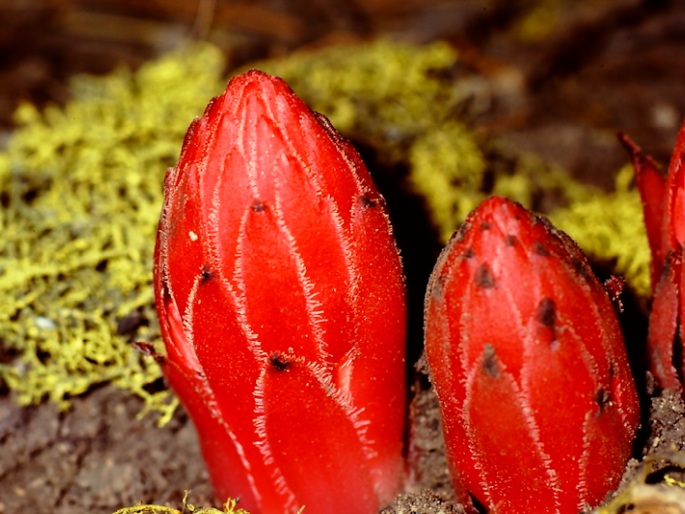
Distribution: West of North America, found in southwest of Oregon, west Nevada, California and reaches north of Baja California in Mexico. This is a monotypic genus.
Ecology: Grows in coniferous or mixed forests, in elevations from 1100 to 3000 m. Blooms from late spring to summer.
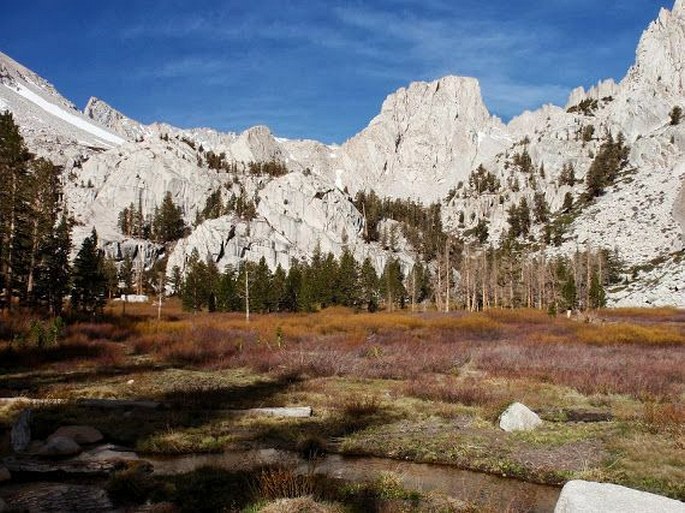
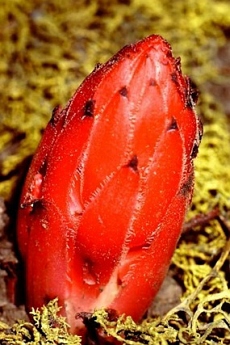
Description: Perennial herb, heterotrophic, mycorrhizal, lacking chlorophyll, stemless. Underground rhizome develops a raceme inflorescence, 5–50 cm tall, with strikingly red bracts, narrowly lanceolate to lanceolate, 1–8 × 5–15 mm, glandular hairy. Pedicelate flowers horizontal to spike, to almost drooping, pentamerous; sepals lanceolate to ovoid, 8–15 mm long and 4–6 mm wide, corolla bell-shaped, 12–18 mm long, stamens 10, disc-shaped stigma. Fruit is a capsule, 10–25 mm across.
Host: It parasitizes on roots of Red Fir (Abies magnifica).
Note: Some closely related plants of this subfamily Monotropoideae are quite common in North America. As examples we can name Candystick (Allotropa virgata), Pinedrops (Pterospora andromedea) and Indian Pipe (Monotropa uniflora).
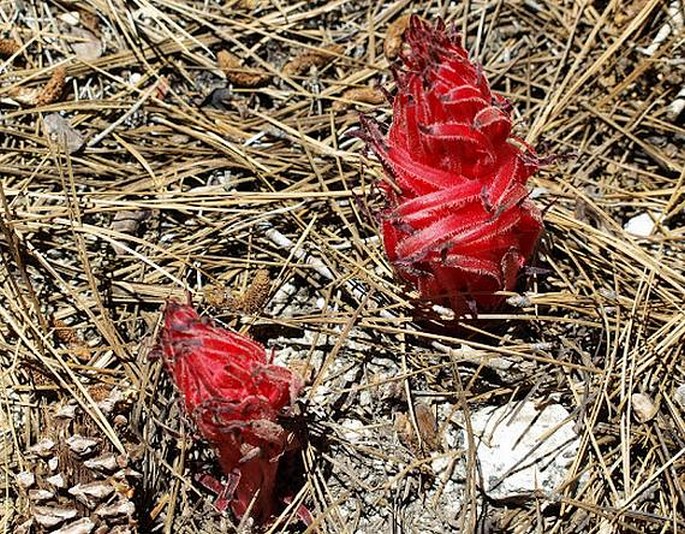
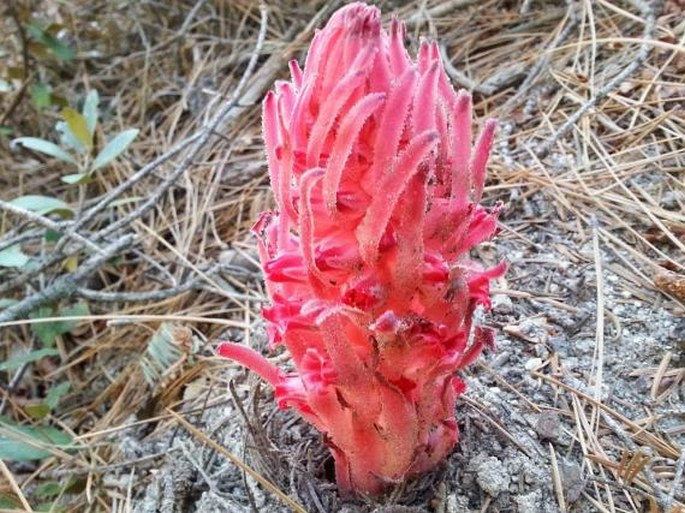
These images were taken in USA, California, Kings Canyon National Park (by Karel Bergmann, July 1983) and California, Mount Whitney (by Pavlína Zahradníková, May 2013 and 2014).


